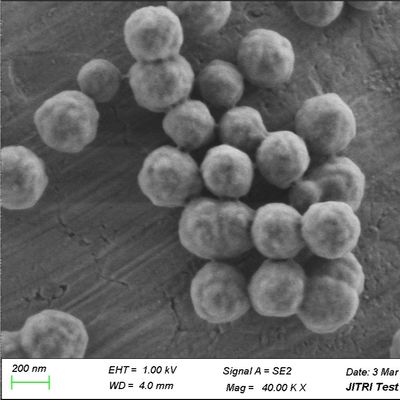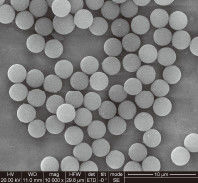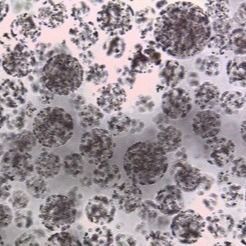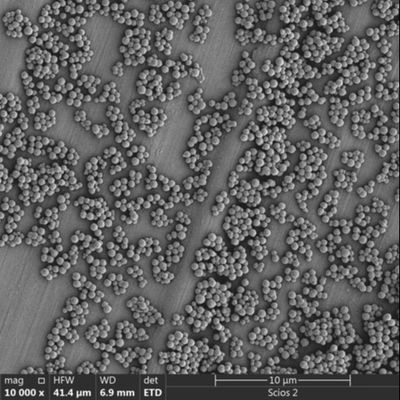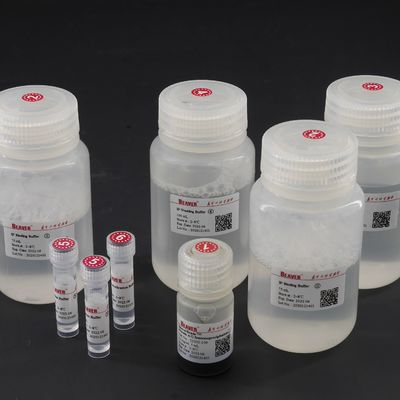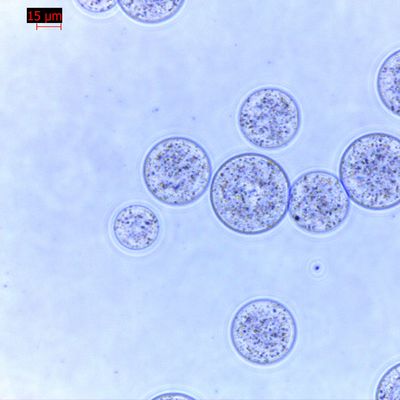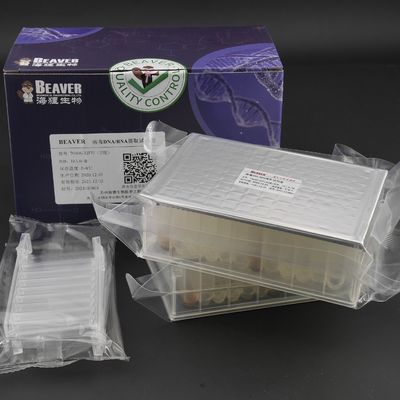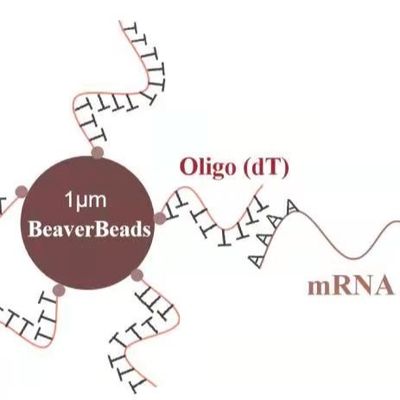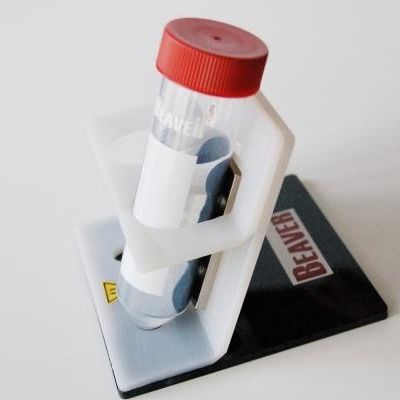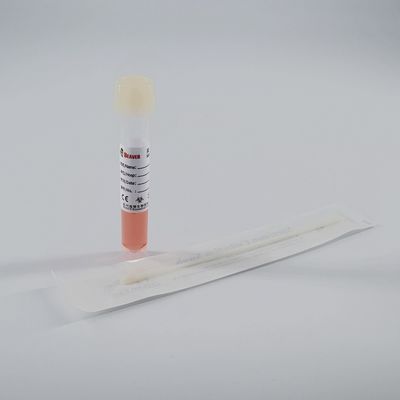20% (v/v) 30 - 150 μm Agarose NHS Magbeads Preactivated N - Hydroxy Succinimide Nanoparticle
1, Description:
The NHS magnetic beads are superparamagnetic beads with activated groups of N_Hydroxysuccinimide on the surface, which can react with primary amines on desired ligands and bind them covalently with amide linkage to the beads. The ligand can be various molecules including antigen, antibody and other proteins. Compared with the traditional carboxyl, amino magnetic beads, the NHS group of magnetic beads don’t need to activate EDC/NHS or Glutaraldehyde, simply dissolving the amino-containing bio-ligand in the coupling buffer, at room temperature, mixing with proteins and the NHS magnetic beads for only 1-2 hours, the bio-ligand can be coupled to the magnetic beads. The advantages include easy operation, mild coupling conditions and coupling fast and efficient. The magnetic bead coupling process must be carried out in a buffer solvent free of any amino. This method can be operated manually or automatically.
The biological ligand can be covalently coupled to the magnetic beads. It has the advantages of simple operation, mild coupling condition and quick and efficient coupling of biological ligands. The difference between BeaverBeads ™ Mag NHS and BeaverBeads ™ Magrose NHS is that Mag NHS is a polymer-based solid microsphere with a particle size of 2 μm and is mainly used for analytical areas (eg in vitro diagnostics, microbiological testing, immunoprecipitation, immunization Precipitation, etc.); and Magrose NHS is a natural hydrophilic polymer agarose as the substrate of porous microspheres, particle size of 30 ~ 100μm, which has good biocompatibility, a larger surface area and biological Based coupling, mainly used for separation and purification of the field (such as protein separation and purification, antibody isolation and purification).
2, Introduction:
| Product Name |
Agarose NHS Magbeads Preactivated |
| Mean particle size |
30-150 μm |
| Magnetic core |
Fe3O4 |
| Shell |
Agarose |
| Magnetic |
superparamagnetism |
| Ligand content |
~50 μM/mL gel |
| Binding ability |
20~30 mg rabbit IgG/mL beads |
| Preservation fluid |
20% (v/v) ethanol solution |
| Operation |
Automate/manual |
| * water average particle size, Malvern Nano determination |
3, FEATURES:
-
1. Simple, without activation, can be directly covalently coupled with the biological ligand;
-
2. Efficient, bio-ligand coupling efficiency of up to 90% or more, much higher than the carboxyl beads, while the ligand with a higher binding capacity;
-
3. Fast, 1 ~ 2h to complete the bio-ligand coupling;
-
4. Mild, room temperature or 4 ℃ coupling, coupling system pH 5 ~ 9;
-
5. Stable, the formation of a stable amide bond, to prevent the ligand off.
-
6. Good biocompatibility, reduced nonspecific adsorption.
4, Precautions:
1. Magnetic beads are sensitive to water. In order to ensure product quality, after sampling immediately cover
the bottle caps and seal with a sealing tape, store at 4 ℃.
2. Beads are not allowed to dry or freeze. Drying and freezing operations may result in the aggregation of
magnetic beads and thus loss of binding activity.
3. Pre-and post-reaction protein content can be determined by indirect methods (e.g., Thermo Scientific ™
Pierce ™ 660 nm Protein Assay, Product No. 22660 and 22662) or by direct methods (e.g., use the Thermo
Scientific ™ Pierce ™ Micro BCA Protein Assay, Product No. 23235) to detect the surface of the magnetic
beads coupled with the protein content. Using wavelengths around 280 nm to determine protein levels is
not advisable. Because NHS groups strongly absorb near 280nm, they can seriously interfere with the
detection.

 Your message must be between 20-3,000 characters!
Your message must be between 20-3,000 characters! Please check your E-mail!
Please check your E-mail!  Your message must be between 20-3,000 characters!
Your message must be between 20-3,000 characters! Please check your E-mail!
Please check your E-mail! 
